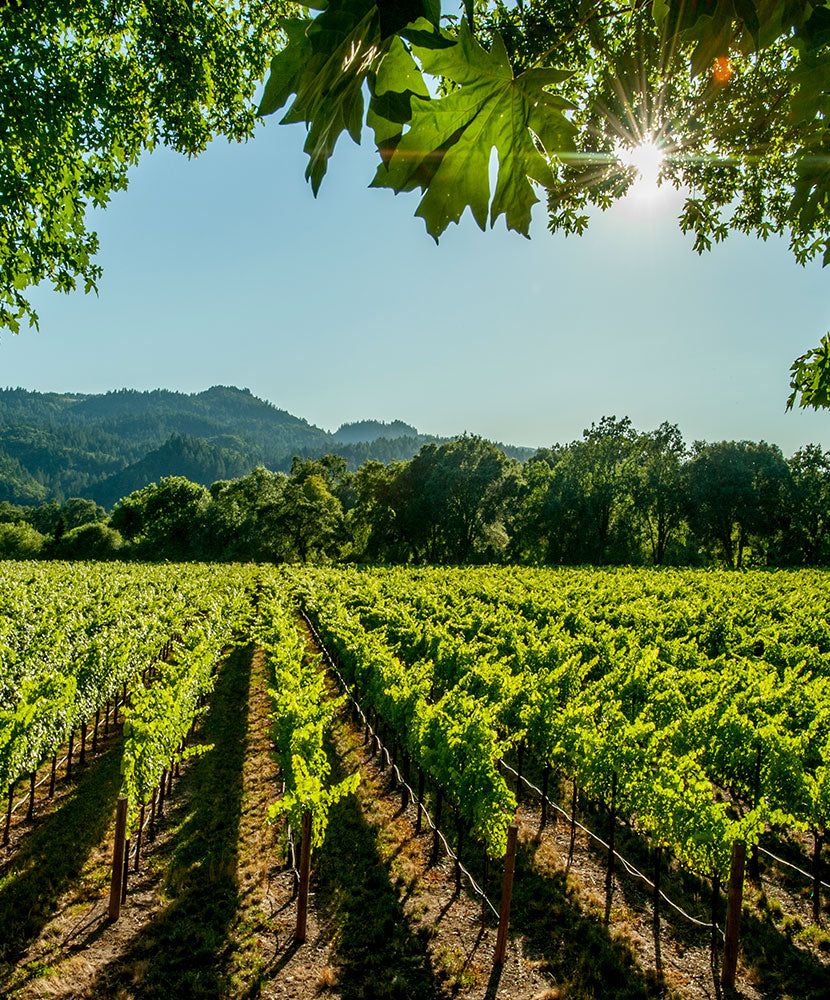Grapes may be small, but they are mighty. Wine starts on the vine – as grapes bud, develop, and ripen into the crushable berries that create the wine we love to sip. In honor of Earth Day this year, I’m digging in (pun totally intended) to highlight how grapes develop on the vine, and why that matters for wine lovers like us.
I could wax poetic for days about microclimates and vine dormancy and American rootstock, but for today’s purposes we’ll focus on what happens from bud break to harvest in three general phases: bloom, veraison, and ripening.
Bloom
In the Northern Hemisphere, a grape’s lifecycle starts at bud break in early March, when daily high temperatures start to hover at and exceed 50°F. In the Southern Hemisphere, this starts in or around September. This is when those leafless vines start coming back to life. Within weeks, you’ll see the start of grape bunches forming along bright green stems, poking out from sometimes decades-old rootstock. Soon, vines are growing, leaves are everywhere, and vineyard maintenance becomes the focus for many farmers and winemakers, who use stakes and wires to train the vines for maximum exposure to sunshine.

Veraison
Want to seem extremely knowledgeable about all things wine the next time you’re out wine tasting? Drop the word veraison (ver-AY-zen) which is the French word for changing color of grape berries. This stage in the grape life cycle signifies the beginning of ripening (we’ll get there next) and, similar to the bloom phase above, is quite easy to see. During veraison: grapes, which all start out as green berries, are becoming red and purple and gray and blue. Bunches often transform one berry at a time so it’s a very cool time to walk through a vineyard. Check out this reel I made last year when Balletto’s wines were in the midst of this phase.
For winemakers, veraison is a helpful checkpoint in harvest planning. Weather surprises aside, farmers and winemakers can start to estimate when to harvest in part by when veraison begins. Crop dropping or thinning also takes place around this time, in which unripe or imperfect grape bunches are picked from the vine to allow the remaining bunches to have as many nutrients from the plant as possible for the best quality grapes.
Ripening
As individual berries ripen on their cluster, there are a ton of chemical changes happening under the skin. Remember photosynthesis from 5th grade biology? (It’s the process by which plants use sunlight, water, and CO2 to create oxygen and energy, in case it’s been a while.) Grapes are growing and developing during this stage, transforming from tiny, tart, tannin bombs to the varieties we know and love. Aromas develop, berries grow and their skins continue to deepen in their hue, and tannins soften. Acids decrease and sugars increase until that perfect balance is achieved and it’s time for grapes to be picked.
The last stage in the grape-growing process has got to be my favorite: harvest – when grapes are picked from the vine and the more formal winemaking process begins! In the Northern Hemisphere this happens between late August and October, and in the Southern Hemisphere between February and April. The “right” time to harvest depends on the weather of the season, the grape variety in question, the Brix level (a measurement of the sugar content of grapes), and a winemaker’s style.
Learn more about wine growing
Agriculture can take a toll on the environment, but there are so many ways that growers and winemakers are giving back to regenerate the nutrients of the soil and to ensure that the wine industry continues to operate ever more sustainably. Want to learn more? Check out the free Sustainable Winegrowing Ambassador Course through the California Wine Institute. It’s a great way to familiarize yourself with what some wineries have committed to in order to limit their impact on the environment.
Grape growing and winemaking have been millennia-long traditions and each year we learn more about how to get the best juice, and how to regenerate the vineyards and give back to the Earth. For your own Earth Day celebration this year, raise a glass to the growing process, the magic that exists every spring (or fall) as these plants come back to life, and how growers and winemakers around the world are honoring this year’s Global Earth Day theme and investing in our planet.

